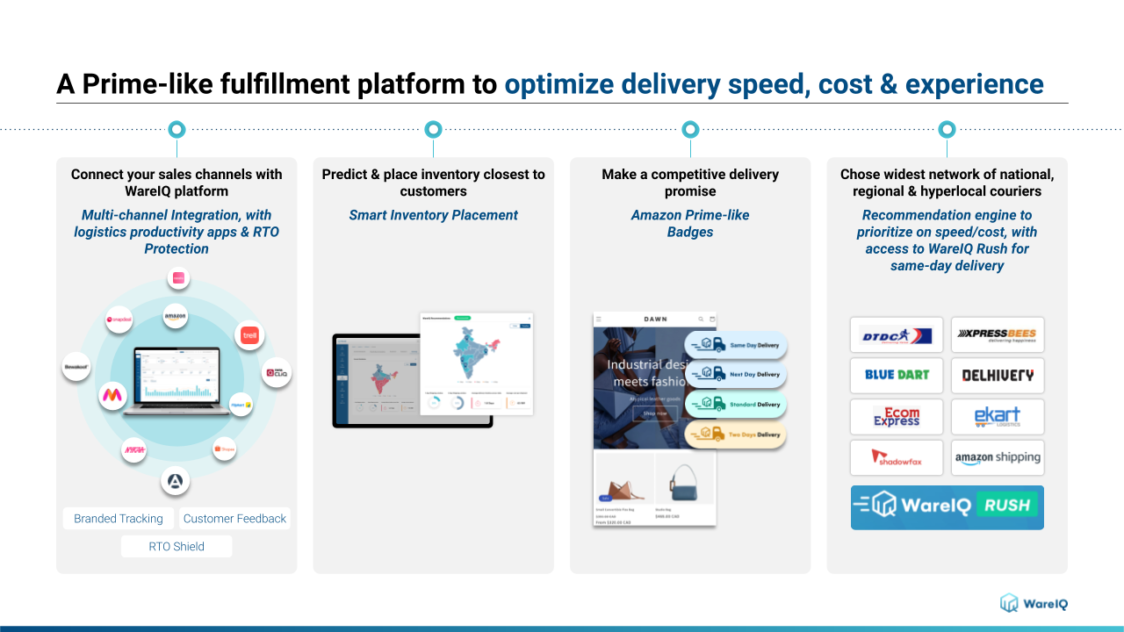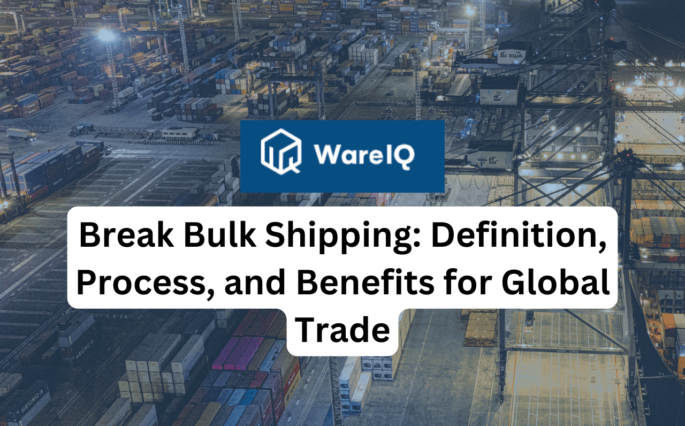What Are Shipping Labels & How to Create them? A Guide for Fulfillment in 2025

The shipping labels that appear on packages don’t get as much attention as they should. They contain crucial information about the shipment such as details about the product, where it needs to be shipped and the price of the order. If a package happens to leave the ecommerce warehouse without a label, the order will not be legit and the customer may not accept it.
While most people may not be aware of the crucial role of shipping labels, it does not diminish their significance.
So what exactly are shipping labels? Let us take a deeper dive.
What are Shipping Labels?
Shipping Labels are a shipment’s identification card or stamp. They contain critical information about the product and enable it to be transported from the manufacturer to the distributor and eventually, the end customer.
It is vital to understand how shipping labels work. They usually contain most of the following data but differ from shipper to shipper:
- Contents of the package
- Origin and destination
- Sender and receiver’s information, including contact details
- Weight and dimensions
- ID or a reference number unique to the shipment
- Carrier information
- Any specialised inspections conducted to test the fitness and safety level of the product
- Traceable barcode
- Shipping mode, e.g., express or standard delivery
- Payment status: paid, unpaid, or partially paid
- MaxiCode, which is like a QR Code. It provides all the necessary data and can be read by a machine in any direction.
- Customer care number
- Contact details in case it needs to be returned
A shipping label is a proof of supply chain automation. With a shipping label stuck to a package, customers can get all information with just a scan. These labels are non-reusable. No shipping label can be pasted on a new shipment after delivery of the previous one.
WareIQ, an eCommerce fulfillment company, empowers online brands with a superior-tech platform to compete with Amazon like service levels by bringing their average delivery timelines from 5-10 days to 1-2 days.
There are many printers available in the market for printing shipping labels. Let us take a look.
Suggested Read: What are Return Labels?
Types of Shipping Label Printers
Presently, 3PL shipping or logistics partners offer to print shipping labels. Moreover, the manufacturer or the distributor can use a downloadable label template, create their own labels and start printing. Although shipping labels can be printed on a regular printer, it takes more time as each label needs to be cut from the paper to be pasted on the package. One of the reasons why companies use specialised printers to print labels is to save time.
The most prominent printers for making shipping labels are:
Inkjet and Laser Printers
These are a good option if a moderate number of labels need to be printed every month. However, they can be costly due to the ink price, which is often bought depending on usage. Moreover, labels printed through these machines need an extra layer of protection. For instance, the ink can get smudged when exposed to water. Furthermore, if they are placed inside a protective covering, the barcodes and MaxiCodes can become unreadable by machines. Therefore, shipping labels printed through these devices require alot more effort and consideration for external factors.
Thermal Printers
Although thermal printers demand more initial investment, they save the cost of ink or protective coverings. Only the label rolls need to be bought and replaced. Since they use heat to embed the print, there is no risk of smudging. They produce long-lasting labels.
Thermal printers are an excellent investment if the company deals with many shipments per month.
There are various brands available in the market. Some of the top brands and models are mentioned below:
- Rollo Label Printer
- DYMO Label Printer
- MUNBYN Thermal Label Printer
- AOBIO X4 Shipping Label Printer
- Arkscan 2054A Label Printer
- MFLABEL Thermal Label Printer
- Jiose Thermal Label Printer
- K Corner Shipping Label Printer
- Brother QL800 Label Printer
4 Best Shipping Labels Practices to Consider in 2025
Printing correct shipping labels is essential. Any missing information can delay, delegitimize or stop the distribution of the package. Here are some of the best practices that companies should follow for printing shipping labels:
Placement
Shipping labels must be pasted on the topmost surface for parcels that must be kept upright and have the ‘This Way Up’ instruction printed or pasted on the box. For all other packages, it needs to be stuck on an easily visible area like the top or side of the box.
The label must be stuck flat on the surface without bends or creases. They must be placed after the package has been thoroughly wrapped. Moreover, they must be of an apt size that does not spill outside the box or where the print is too small for reading. Their size and quality affect their functioning.
Protection
In the monsoon season or in areas with high humidity, the label must be covered with plastic or tape. Some shippers use plastic wallets to slide the label in. It remains temporarily sealed and can be pulled out for reading. While this practice was initially used only for international shipping to include necessary documents for customs, many shipping aggregators have started using it in domestic logistics.
In an everyday scenario, shipping labels must be stapled or pasted well to ensure that they do not fall off en route.
Waybills
One cannot predict what damage might occur to a shipping label. Hence, it is essential to have a backup. Moreover, the packing slips and waybills are copies of the shipping label or a document containing the same crucial shipment information. It goes inside the package or the plastic wallet stuck to the outside.
Waybills contain the same information as the shipping label, including the sender’s and receiver’s information, package content, order ID, and customer service number.
Special Instructions
A shipping label is the window into the details of a package. It must include any special directives for handling the shipment safely and correctly to avoid damage. The shippers should print instructions such as:
- Correct instructions for placing the package, e.g. ‘This Way Up’ labels
- Warnings for fragile content
- Warnings for temperature or time-sensitive content
- Warnings for flammable products
- Labels for confidential content
- Instructions such as untouchable by hand such as for products containing dry ice
Creating Shipping Labels
Things like label and font size, order information, location of the label and quality of paper used for printing make a huge difference. A company can get shipping labels created from two sources:
- Ask their logistics partner to generate the label for a few orders
- Hire an aggregator for label printing
Most 3PL shipping partners take the onus of printing the company’s shipping labels. However, if a business does not have such an association, they can manually print the labels for their shipments. Here are a few tools:
Carrier Websites: Websites like DHL, UPS, Amazon FBA, FedEx, and eBay shipping allow users to create shipping labels on their websites. This comes in handy if the shipment volume per month is low. Besides importing all the shipment data into the website each time, the shipping company must manually update the customer on order tracking details.
Shipping Label Software Solutions: Solutions like Linnworks, Loftware NiceLabel, Loftware Spectrum, MarkMagic, Maestro Label Designer can help print shipping labels for a larger monthly shipment volume.
Shipping Tools: They help online retailers automate the entire shipping process, including generating shipping labels. Once integrated with the eCommerce website, they automatically retrieve order details and help create the label. Companies use such tools when handling a large number of shipments per month.
Manual Writing: Shipping labels can also be handwritten on paper and stuck to the package or written directly on a small box, mostly for private and domestic shipments. As a result, most companies do not use this method to avoid any risk of damage to the label.
Conclusion: How are Shipping Labels Important for eCommerce Orders?
A shipment without a label is like a person travelling without a ticket or a passport. But there are three specific reasons why shipping labels are needed for eCommerce industry operations in 2025.
Smooth Information Flow
A shipping label contains all information that the transporters and customers need to know for a smooth package delivery to its final destination. Any discrepancy or absence of such information will halt the package in the middle of the supply chain.
Enhances Efficacy
Supply chain productivity depends on the accurate and timely flow of information. Shipping labels are the messengers that carry data from the warehouse to the end customer via distributors. Their presence ensures that the supply chain functions properly. A package without a shipping label can get lost in transit or delayed, thus leading to unmet customer expectations.
Maintains Brand Image
Shiny and clearly printed shipping labels create an excellent impression for the onlooker. Of course, labels can get dirty and damaged in transit. But the top-notch quality of shipping labels polishes the brand image for the end customer.
If you need a shipping label provider for your business, in addition to a host of other fulfillment requirements, consider partnering with WareIQ.
WareIQ is one of India’s leading and fastest-growing full-stack eCommerce fulfillment companies that offer a variety of services from same-day and next-day delivery, shipping badges and RTO Shield, to state of the art technological solutions such as our custom WMS and our intuitive, well-designed app store. We can take care of your brand’s entire fulfillment requirements and ensure that you and your customers get the best order fulfillment in the country and have a hassle-free experience and raise satisfaction levels to new heights.
You May Like: Branded Shipping in eCommerce

- Pan India Fulfillment & Darkstore Network: Plug-and-play fulfillment infrastructure with no minimums, which is compliant with Amazon Seller Flex, Flipkart Assured, Myntra and other marketplaces
- Inventory & Network Planning Excellence: Best-in-class AI models for sales forecasting, product segmentation, and inventory management to reduce inventory by 40% and increase revenue by 10%.
- Vertically Integrated Fulfillment Tech Stack: Our Fulfillment Tech Solution supports integrations with 20+ top marketplaces & D2C platforms, and prominent national, regional and hyperlocal couriers, enhancing reach by covering deliveries for 27,000+ pin codes
- Supply Chain Productivity Applications: Integrate a host of supply chain productivity apps with a single-click to your existing CRMs, ERPs & accounting software to manage your logistics workflows from one command center. Use Apps like RTO Shield to get 100% RTO protection, Branded Tracking to turn your order tracking page into a profitable marketing channel, and many more.
Trusted by 300+ top Indian brands, we are helping them accelerate online sales and expedite their growth through a synergistic combination of advanced technology, robust fulfillment infrastructure & seller enablement services!WareIQ is backed by leading global investors including Y Combinator, Funders Club, Flexport, Pioneer Fund, Soma Capital, and Emles Venture Partner.







